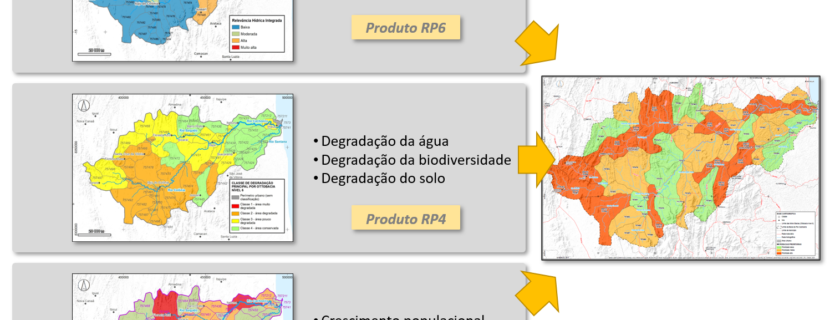The Cachoeira river flows along 150 km, from its source to the sea and its river basin spreads 5.000 km2, through 13 municipalities. This area is located in the southern costal region of Bahia and is dominated in its final portion by a mosaic of natural vegetation and agriculture (mainly cacao, that is grown under the native trees), while the rest of the basin is occupied by pastures for livestock, which is the main economic activity.
The goal of this assignment was to define a strategic environmental revitalization plan for the whole river basin that is severely degraded in some areas (due to intensive grazing) or risking short term degradation in others (due to the excessive use of water for some economical activites).
The main steps of this assignment were:
- Characterize the degradation (physical, ecological and landscape) and the socio-environmental problematic;
- Define priority zones to intervene and suggest the best mechanisms and actions to revitalize each area;
- Deliver a portfolio containing 11 pilot-projects to be tested and further used in the degraded areas;
- Suggest strategies for improving environmental governance to better implement the revitalization plan.
The assignment involved the making of 27 maps, mono thematic single layer and also combined ones resulting from multi-layer analysis; one of the most important maps was the basin degradation map (soil, water and biodiversity) that classified the whole territory in 4 hierarchical classes. It was then validated through field work (49 points) to calculate the Kappa index, which had a result of 0,715, meaning it had a high correspondence with reality (which is over 0,7). The final map depicted the priority micro-basins for revitalization: 16 high priority and 21 medium priority, out of 58.
The final part of the project involved the making of the “revitalization strategy plan” addressing each of the 58 micro-basins and the “governance plan” to ensure the engagement of the relevant entities and stakeholders, and also suggesting some possible funding mechanisms.
The whole process involved a robust social participation: 3 thematic workshops that were attended by 132 people from 68 entities and 3 public consultation sessions with a logged participation of 201 people, from 59 entities. To further encourage participation, an online platform was developed, where anyone could comment, ask or suggest.

